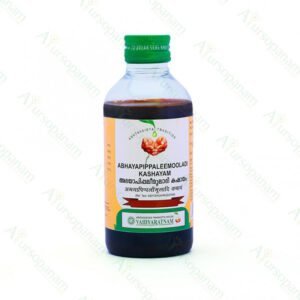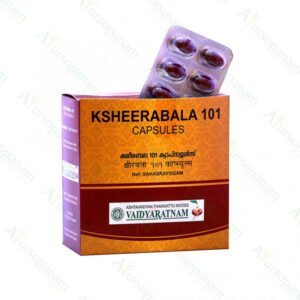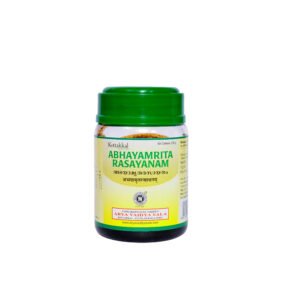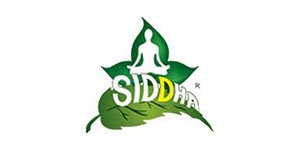The Gandharvahastadi Kashayam sachet contains dry powder of extract of nine medicinal herbs chosen for their distinctive therapeutic activity on the gastro-intestinal tract, making it a superb digestive and a safe laxative to boot. The Kashayam support for occasional bloating, gas, constipation. The formulation helps ease digestive discomfort and gently supports the elimination of toxins bowels.
Features & Benefits
- An good medicine for bloating and gas accumulated in stomach
- Two digestives Shuntiand chitraka together functions to stimulate the release of digestive enzymes and to help the body get rid of metabolic wastw that have accumulated due to a dysfunctional metabolism.
- The Gandharvahastadi Kashayam has a purifying and restorative effect on the entire GI tract.
- The astringent and therapeutic qualities of stinging nettle and Indian elm aid in regaining the health of the intestines by harmonising the secretion of digestive enzymes, prevents stomach discomfort. This guarantees the early phases of peptic ulcers efficient healing. Haemorrhoids and Fistulae-in-ano are additionally treated by the healing action.
- Safe and controlled laxation that doesn’t build habits ideal for usage over an extended length of time. Stinging nettle and castor plant roots work together to soften faeces and make them easier to evacuate. The Gandharvahastadi Kashayam is an effective treatment for persistent constipation.
- With this combination, pain is acknowledged providing long-lasting relief from low back pain by reducing pelvic and lower back swelling and reviving circulation.
- At the level of the intestines, it balances Vata dosha (Pakwasaya). The vatanulomana activity of Gandharvahastadi Kashayam is excellent.
Dosage and Instructions
Each sachet comes in 24gms. One sachet of Gandharavahastadi Kashayam is recommended for one time use. Cut open one sachet, empty the contents to 200ml, stir well and boil in low flame for 10minutes. This kashayam can be taken in warm consistency twice daily in empty stomach, before breakfast and dinner.
Key Ingredients
Gandharvahastha (Ricinus Communis)
It is commonly known as the castor oil plant. Since ancient times castor seed and castor oil are used to cure rheumatism, worm infestation, and abdominal disorders. It relieves constipation also. External application of the oil relieves boils and other skin disorders. Erandaoil is applied over hair and eyebrows for strengthening and growth.
Chirabilwa (Holoptelea Integrifolia).
Known as Indian elm, it is used for the treatment of inflammation, gastritis, dyspepsia, colic, intestinal worms, vomiting, wound healing, leprosy, diabetes, hemorrhoids, dysmenorrhoea, and rheumatism. Powdered bark is sprinkled over the wound to control bleeding and for healing quickly.
Chitraka (Plumbago Zeylanica)
The whole of the plant is used for medicinal purposes. This medicinal herb is used mainly in indigestion cases along with carminative, antiaging properties. The root powder is mixed with buttermilk and took internally for hemorrhoids.
Pathya(Terminalia Chebula).
Commonly known as Indian walnut tree, it is one among the Triphala. The important drug in the various ayurvedic preparations. It holds high significance for treating diarrhea, dysentery, vision problems, obesity, gingivitis, gout, asthma. Haritaki is rich in vitamin C and substances found to have antioxidant and anti-inflammatory effects.
Punarnava (Boerhaavia diffusa)
The word ‘Punarnava’ means that which rejuvenates. Mainly used in painful as well as oedematous conditions. The properties include immunomodulation, protection of the liver, anticancer activity, antidiabetic activity, anti-inflammation, and diuresis. This useful in treating cancer, jaundice, dyspepsia, inflammation, ophthalmic, enlargement of spleen, abdominal pain, and an anti-stress agent.
Yavasaka (Tragia Involucrata)
It is commonly known as Indian stinging nettle. Involucrata leaf has been traditionally used to treat inflammation, wounds, eczema, scabies, and skin infections. It has also been found to be effective in treating pain and bronchitis. The involucrata root has been traditionally used for the treatment of high fever.
















































Ratings & Customer Reviews
Reviews
There are no reviews yet.